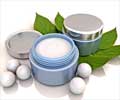Do you know the best moisturizer for a baby with eczema? The best moisturizers are the ones that the child and parent prefer to use.
- Moisturizers are used to soothe dry and itchy skin in children who have eczema
- Over 100 different moisturizers are available, which leads to confusion and waste
- To avoid this, parents should be educated about the wide choices present in using moisturizers for eczema
Effectiveness and safety of lotion, cream, gel, and ointment emollients for childhood eczema: a pragmatic, randomised, phase 4, superiority trial
Go to source).
Read More..
Healing Eczema With Moisturizer
Eczema is a very common skin condition that results in dry, itchy, and inflamed skin patches. The skin condition most commonly occurs before the age of 5 years. Around 1 in 5 children get eczema and continuous scratching exhausts children and their parents (2✔ ✔Trusted SourceHow to Treat ECZEMA in Babies
Go to source). Such an irritating skin condition is mostly treated with the help of moisturizers. Keeping the skin’s moisture intact is the most important thing to be done for controlling eczema and it’s achieved using moisturizer.
Moisturizer helps to protect the outermost layer damaged in case of eczema and makes the skin more sensitive to irritants, allergens, bacteria, and other invaders. A damaged skin barrier makes it harder for the skin to retain its moisture and causes dry, itchy skin, leading to an eczema flare-up or worsening (3✔ ✔Trusted Source
Controlling Eczema by Moisturizing
Go to source).
Finding such a valuable product has become chaotic because of over 100 different moisturizers available on the market. The lack of guidelines in this area also leads to more confusion and wastage.
Finding the Right Moisturizer for Eczema
To provide a clear picture of this confusion, a new study led by the University of Bristol, the University of Nottingham, and the University of Southampton directly compared the different types of moisturizers.In this study, 550 children with eczema aged under 12 years were used randomly and they were using one of four types of moisturizers (lotion, cream, gel, or ointment) as their primary moisturizer for 16 weeks.
Parents completed diaries about their child’s eczema for a year, and some were interviewed about how they used the moisturizers and their ideas about them. The children also had their skin examinations.
The results showed that there was no difference in the effectiveness of the four types of moisturizers used in the study. Skin reactions such as itching or redness were seen in all moisturizer types. Awareness of the different types of moisturizers was low, and users had different preferences based on how the moisturizers look and feel (4✔ ✔Trusted Source
How parents and children evaluate emollients for childhood eczema: a qualitative study
Go to source).
Prof. Matthew Ridd, a GP and study lead from the Centre for Academic Primary Care at the University of Bristol, said: “A study of this type has been long overdue. It has not been in the interest of the manufacturers to directly compare types of moisturizer in the way we have done in this trial.”
These findings also challenge protocols about how often moisturizers need to be applied, which types are less likely to cause problems, and which patients should be recommended certain types.
Everyone Does Not Need the Same Moisturizer
Generally, the way of directing moisturizers is determined by locally agreed formularies. These formularies are based on cost and perceived effectiveness. This makes sense with study findings that show one size does not fit all in the case of choosing the moisturizer for eczema in children.It also points out the need for doctors to make parents aware of the different moisturizer types and help them to choose which one is most likely to work for them. At last, the evidence that supports the saying, ‘The best moisturizers are the ones the patient will use’ in our hands (4✔ ✔Trusted Source
How parents and children evaluate emollients for childhood eczema: a qualitative study
Go to source).
Moisturizers are a key part of treatment for childhood eczema, preventing flares and helping to soothe the skin, and improving the quality of life for children and their careers. In choosing such key products, parent and patient preferences should be given importance. Some people prefer ointments, but others like gels, creams, or lotions. No one option is best.
Further work is needed to determine if these findings also apply to adolescents and adults with eczema, and people with other dry skin conditions.
References:
- Effectiveness and safety of lotion, cream, gel, and ointment emollients for childhood eczema: a pragmatic, randomised, phase 4, superiority trial" - (https://www.thelancet.com/journals/lanchi/article/PIIS2352-4642(22)00146-8/fulltext)
- How to Treat ECZEMA in Babies - (https://www.aad.org/public/diseases/eczema/childhood/treating/treat-babies)
- Controlling Eczema by Moisturizing - (https://nationaleczema.org/eczema/treatment/moisturizing/)
- How parents and children evaluate emollients for childhood eczema: a qualitative study - (https://bjgp.org/content/early/2022/05/22/BJGP.2021.0630)
Source-Medindia













